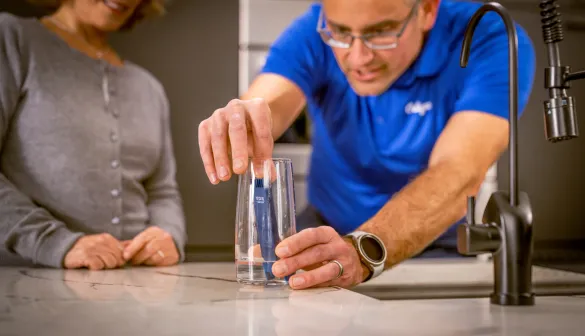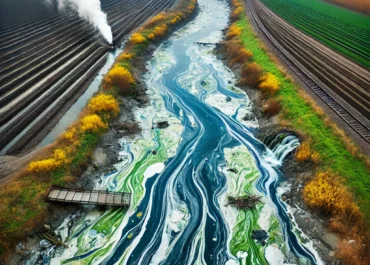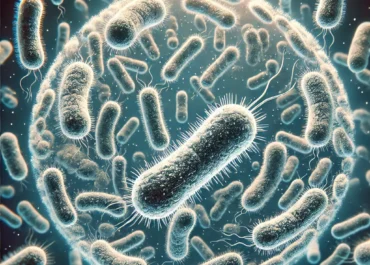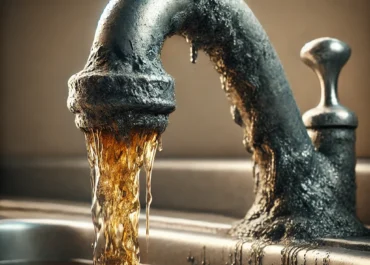Pure Water
healthyLiving!
Because Every Drop Matters!
Protect Your Family, Protect the Future!
Request your test!
Now!
Why Test Your Water
Did you know that your tap water may contain hidden contaminants that could affect your health and well-being? Many households unknowingly consume water with bacteria, heavy metals, and chemicals that could pose serious risks over time. Testing your water is the first step to ensuring a safe, clean, and healthy home.
- Invisible Contaminants – Just because your water looks clear doesn’t mean it’s free of harmful substances.
- Health Risks – Exposure to lead, bacteria, and chemicals can lead to serious health problems.
- Protect Your Family – Ensure the water you drink, cook with, and bathe in is truly safe.
- Know What’s in Your Water – Get a FREE in-home water test and gain peace of mind.
The Most Common Water Contaminants
Lead (Plomo) – Toxic for Brain & Body
• Source:
Lead contamination comes mainly from old plumbing systems, corroded pipes, and lead-based solder used in older homes and infrastructure. The Flint, Michigan water crisis is a well-known example of how lead in drinking water can pose severe health risks.
• Health Effects:
• Neurological damage, especially in children – Even low levels of lead exposure can cause learning disabilities, lower IQ, and attention disorders.
•Developmental delays – Lead exposure during childhood can result in growth and behavioral issues.
• Kidney disease and high blood pressure – Lead accumulation over time can damage kidney function and increase the risk of hypertension.
🔹 There is no safe level of lead in drinking water. Even small amounts can have long-term effects on your health.
Bacteria & Viruses – Silent Health Threats
• Source:
Bacteria and viruses in water usually come from sewage contamination, agricultural runoff, and aging water treatment systems. Poorly maintained wells and flooding can also introduce dangerous pathogens into the water supply.
• Health Effects:
• Severe gastrointestinal infections – Drinking water contaminated with E. coli, Salmonella, or Giardia can cause diarrhea, nausea, vomiting, and stomach cramps.
•Respiratory diseases – Bacteria like Legionella, found in poorly maintained water systems, can cause Legionnaires’ disease, a severe type of pneumonia.
•Increased risk for immunocompromised individuals – The elderly, young children, and those with weakened immune systems are more susceptible to infections from waterborne bacteria and viruses.
🔹 Contaminated water can be a breeding ground for dangerous microorganisms that can cause life-threatening illnesses.
Nitrates & Nitrites – Dangerous for Infants
• Source:
These chemicals enter the water supply through fertilizers, animal waste, septic tanks, and agricultural runoff. Nitrate contamination is common in rural areas where farming and livestock operations are prevalent.
• Health Effects:
•“Blue Baby Syndrome” (Methemoglobinemia) – In infants under six months, nitrates interfere with the blood’s ability to carry oxygen, causing cyanosis (bluish skin) and potential suffocation.
•Thyroid disorders – Long-term exposure to high levels of nitrates has been linked to thyroid dysfunction, affecting metabolism and hormone production.
•Possible cancer risk – Some studies suggest nitrates can form carcinogenic compounds (nitrosamines) in the stomach, increasing the risk of gastrointestinal cancers.
🔹 Infants and pregnant women are at the highest risk of nitrate contamination in drinking water.
Chlorine & Chloramines – Necessary but Risky
• Source:
Municipal water treatment facilities use chlorine and chloramines to kill bacteria and disinfect water. While effective at reducing disease, these chemicals can have unintended health effects.
• Health Effects:
• Irritation of skin, eyes, and respiratory system – Chlorinated water can cause dry skin, eye irritation, and worsen conditions like eczema and asthma.
• Formation of harmful byproducts (Trihalomethanes – THMs) – When chlorine interacts with organic matter in water, it can create carcinogenic compounds linked to bladder and colon cancer.
• Unpleasant taste and odor – Many people find that chlorine gives water a chemical or swimming pool-like taste.
🔹 While chlorine keeps water safe from bacteria, excessive exposure can lead to long-term health concerns.
PFAS (“Forever Chemicals”) – Industrial Toxins in Water
• Source:
PFAS (Per- and Polyfluoroalkyl Substances) are human-made chemicals used in non-stick cookware, firefighting foam, stain-resistant fabrics, and industrial processes. These chemicals are called “forever chemicals” because they do not break down easily and persist in the environment for decades.
• Health Effects:
• Hormonal imbalances and reproductive issues – PFAS can interfere with endocrine function, potentially causing infertility and pregnancy complications.
• Immune system suppression – Studies suggest PFAS exposure can reduce vaccine effectiveness and weaken immune response.
• Increased cancer risk – Long-term exposure has been linked to kidney, liver, and testicular cancers.
🔹 The EPA has classified PFAS as an emerging contaminant due to its widespread presence in drinking water supplies across the U.S.
Arsenic – A Natural but Deadly Contaminant
• Source:
Arsenic occurs naturally in soil and rocks, but industrial pollution and agricultural runoff can increase its presence in drinking water. Areas with high groundwater contamination, such as parts of New Jersey, New York, and Pennsylvania, have reported dangerous levels of arsenic in their water.
• Health Effects:
• Skin lesions and hyperpigmentation – Chronic arsenic exposure can cause dark spots on the skin and thickening of the palms and soles.
• Increased risk of cancer – Arsenic is a known carcinogen, associated with lung, bladder, and skin cancer.
• Neurological and cardiovascular effects – Long-term exposure has been linked to nerve damage, memory loss, and an increased risk of heart disease.
🔹 Even low levels of arsenic in drinking water can pose serious health risks over time.
Is Your Water Truly Safe?
Many of these contaminants have no taste, smell, or visible signs, making it difficult to detect them without proper testing.
💧 Take control of your water quality!
🔹 Schedule your FREE in-home water test today and find out what’s in your water!
important information from our blog
Why You Should Test Your Home’s Water Quality Regularly
The Impact of Water Contamination on Public Health in the U.S.
How Safe Is Your Tap Water? Hidden Contaminants You Should Know About
The Secret to Radiant Skin? It Starts with Pure Water!

Radiant skin and healthy hair start with the water you use every day!”
💧 Many people focus on skincare products but overlook a key factor: the quality of the water they use daily. Tap water often contains chlorine, heavy metals, and other harsh chemicals that can dry out the skin, cause irritation, and damage hair over time. Switching to purified water can enhance your natural beauty, promote hydration, and protect your skin barrier.
Hydrates & Protects Your Skin
✔️ Prevents dryness and irritation by removing chlorine and heavy metals.
✔️ Helps maintain natural skin oils, preventing premature aging.
✔️ Reduces breakouts and clogged pores caused by bacteria and impurities.
Expert Insight: “Studies show that high chlorine exposure in tap water accelerates skin aging by breaking down collagen. Using purified water helps maintain skin elasticity and hydration.” – American Academy of Dermatology

Strengthens & Revitalizes Hair – The Power of Pure Water
💧 Many people invest in high-quality hair products but overlook a key factor: the quality of the water they use daily. Tap water often contains chlorine, heavy metals, and hard minerals that strip natural moisture from hair, weaken its structure, and cause scalp irritation. Over time, exposure to these harsh chemicals can lead to dryness, breakage, and an unhealthy scalp. Switching to purified water can restore hydration, protect hair fibers, and improve overall hair health.
Strengthens & Revitalizes Hair
✔️ Prevents scalp dryness and dandruff by eliminating harsh chemicals that disrupt the natural oil balance.
✔️ Reduces hair breakage and split ends caused by mineral buildup, which weakens the hair shaft.
✔️ Keeps hair shinier, softer, and more manageable by preserving natural moisture and enhancing product absorption.
📢 Expert Insight: “Studies show that washing hair with purified water prevents the buildup of minerals that make it dry, dull, and prone to damage. Removing chlorine and heavy metals helps maintain hair strength and elasticity.” – Journal of Dermatological Science




